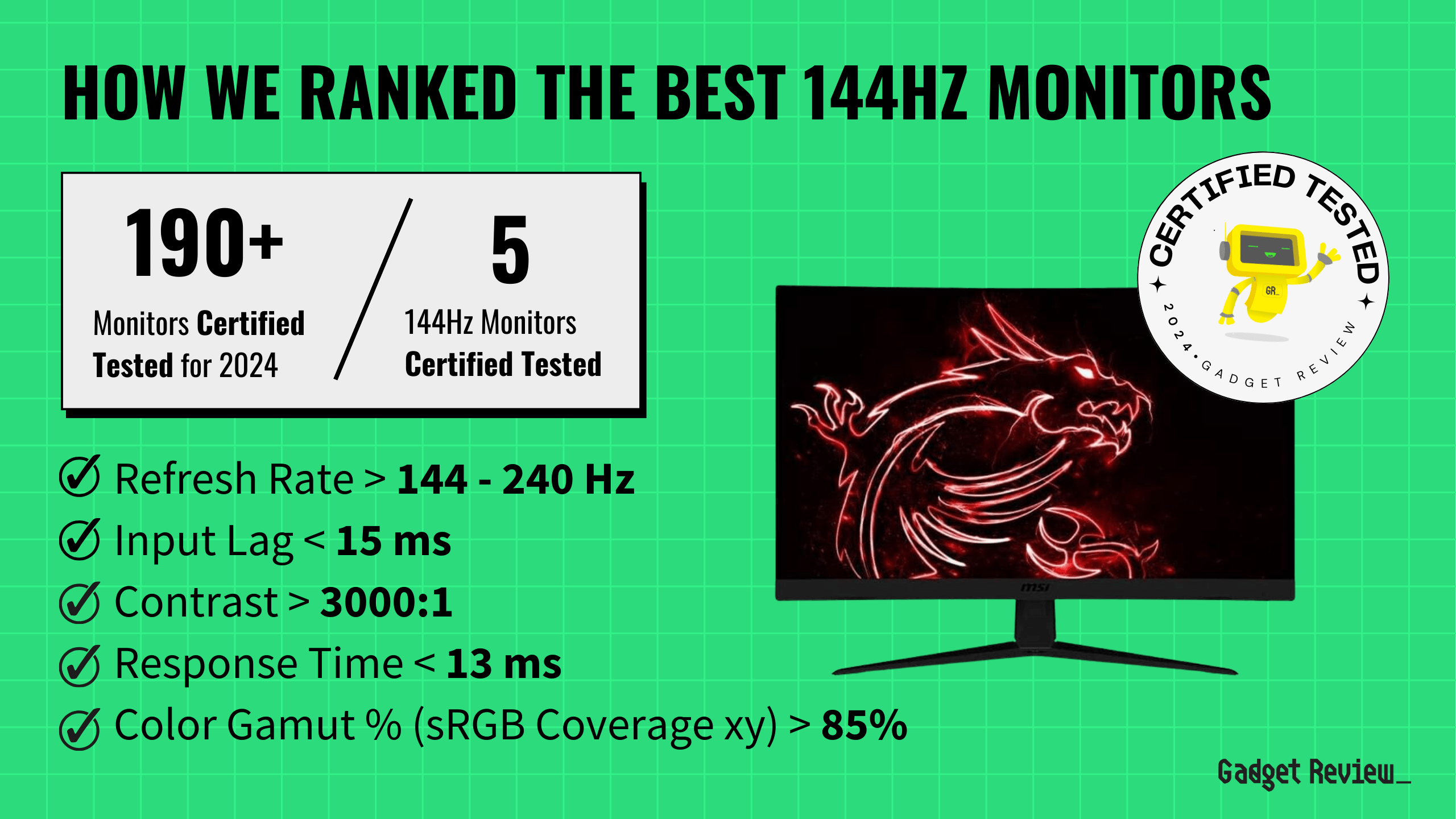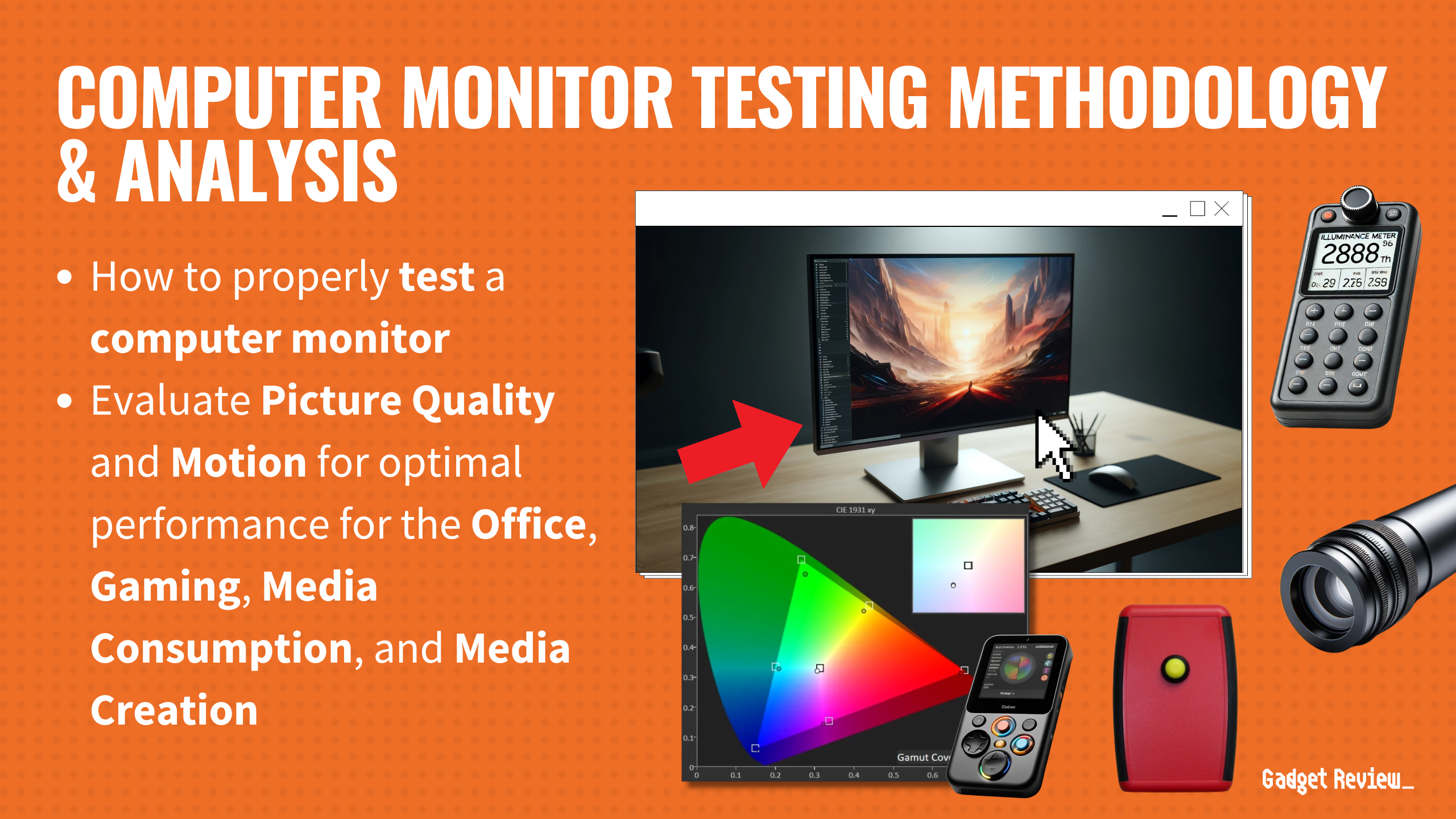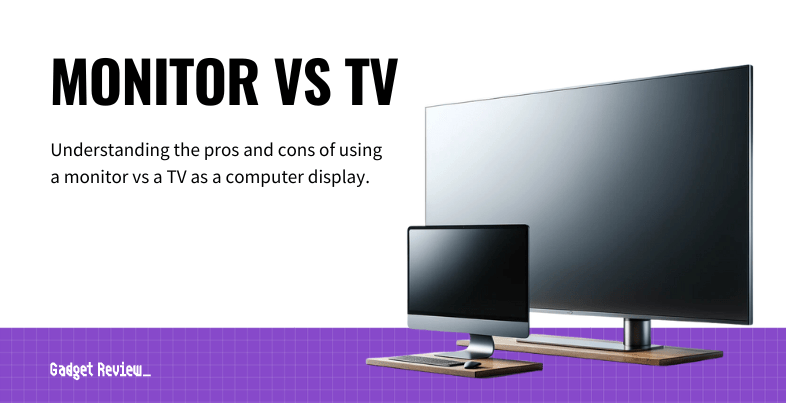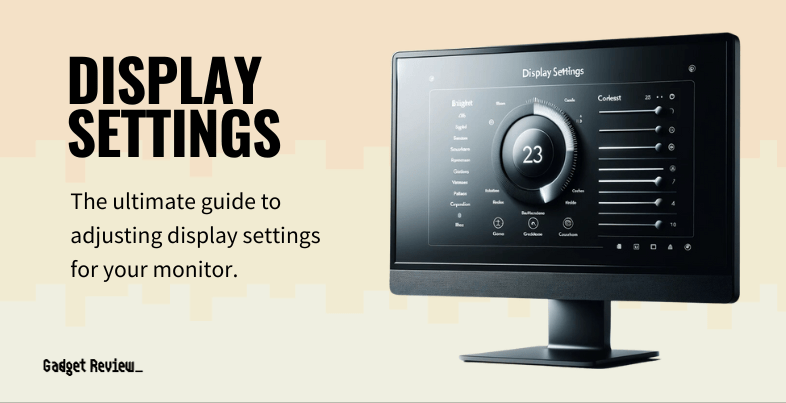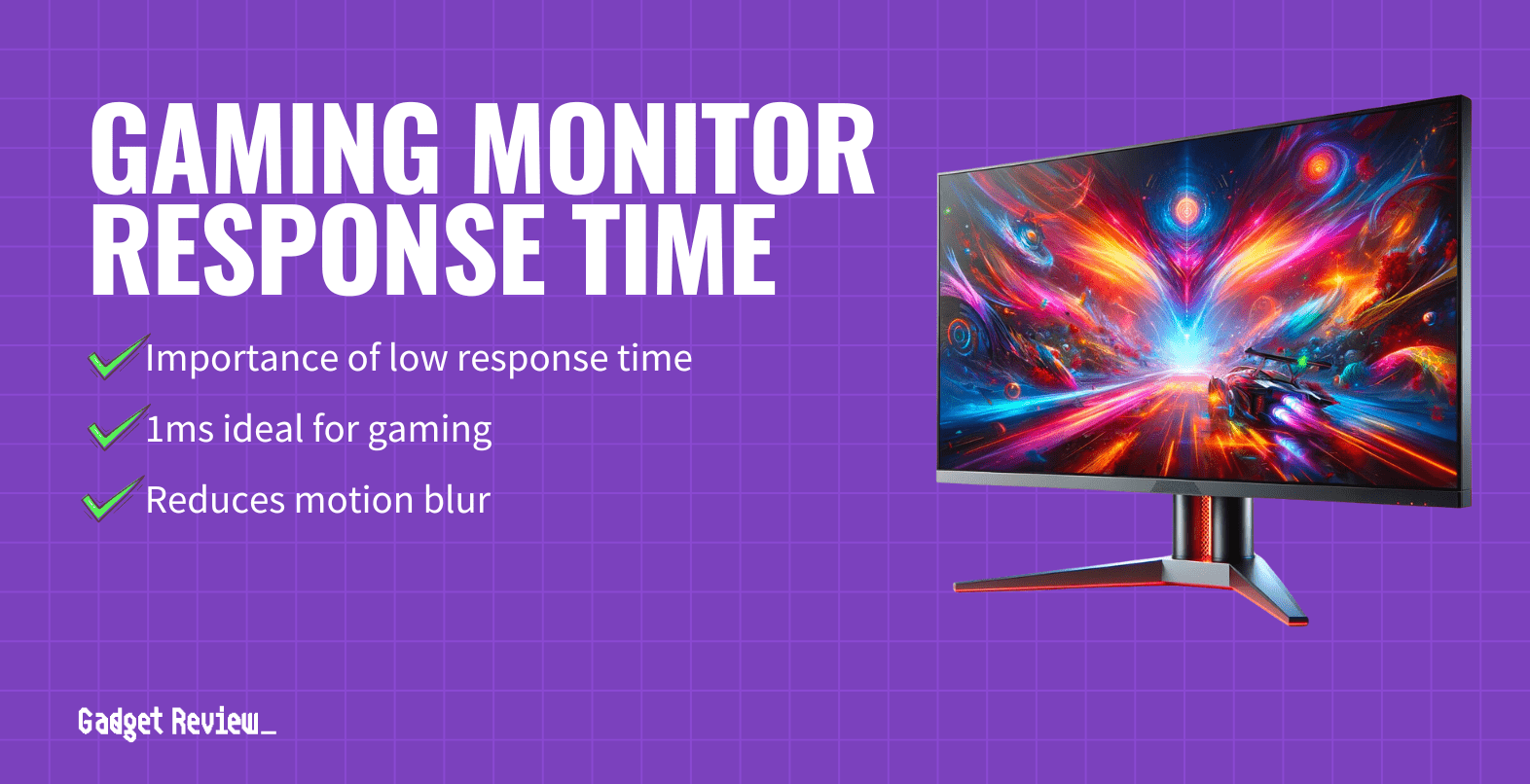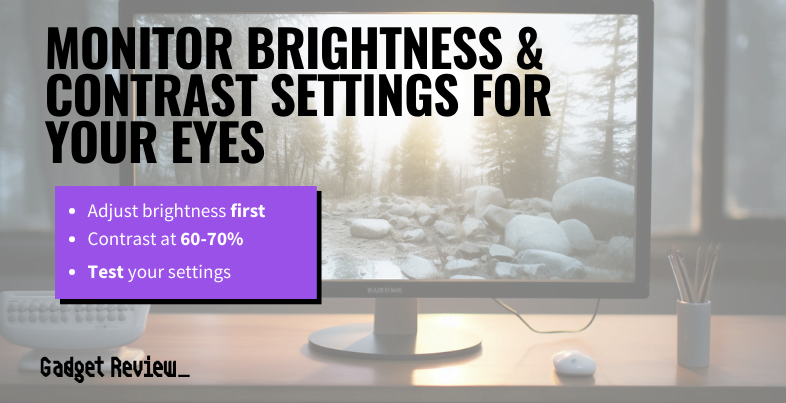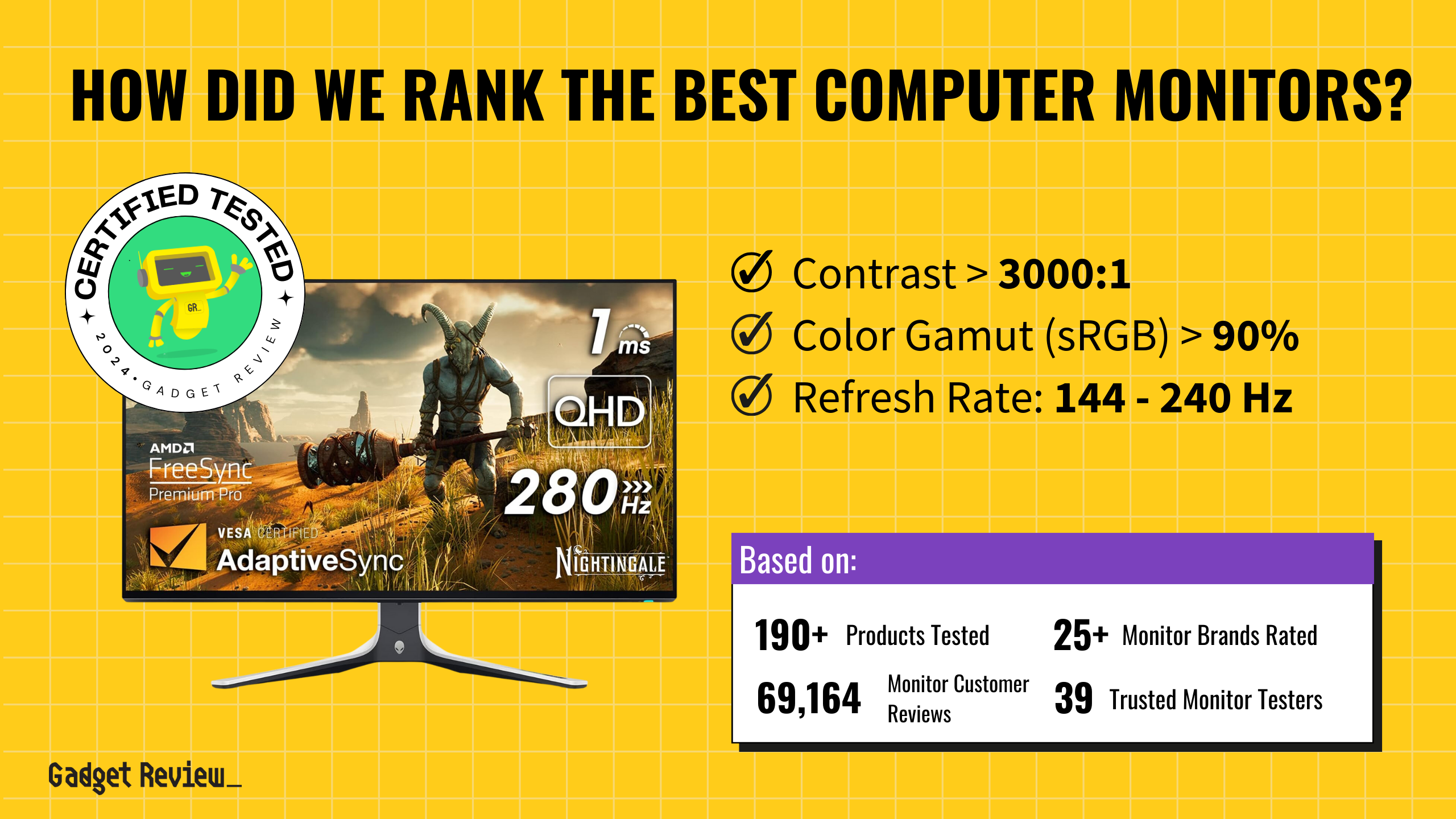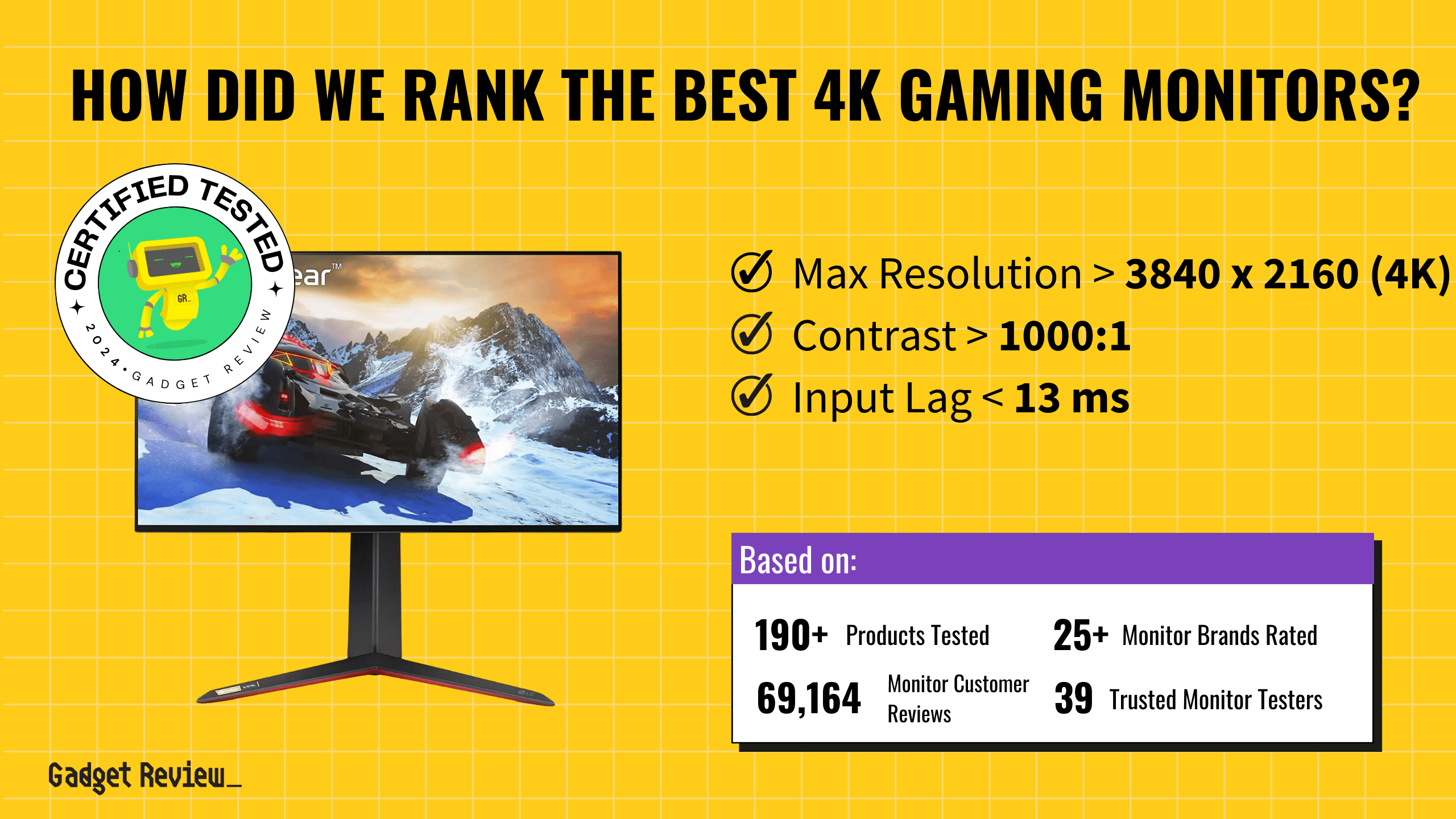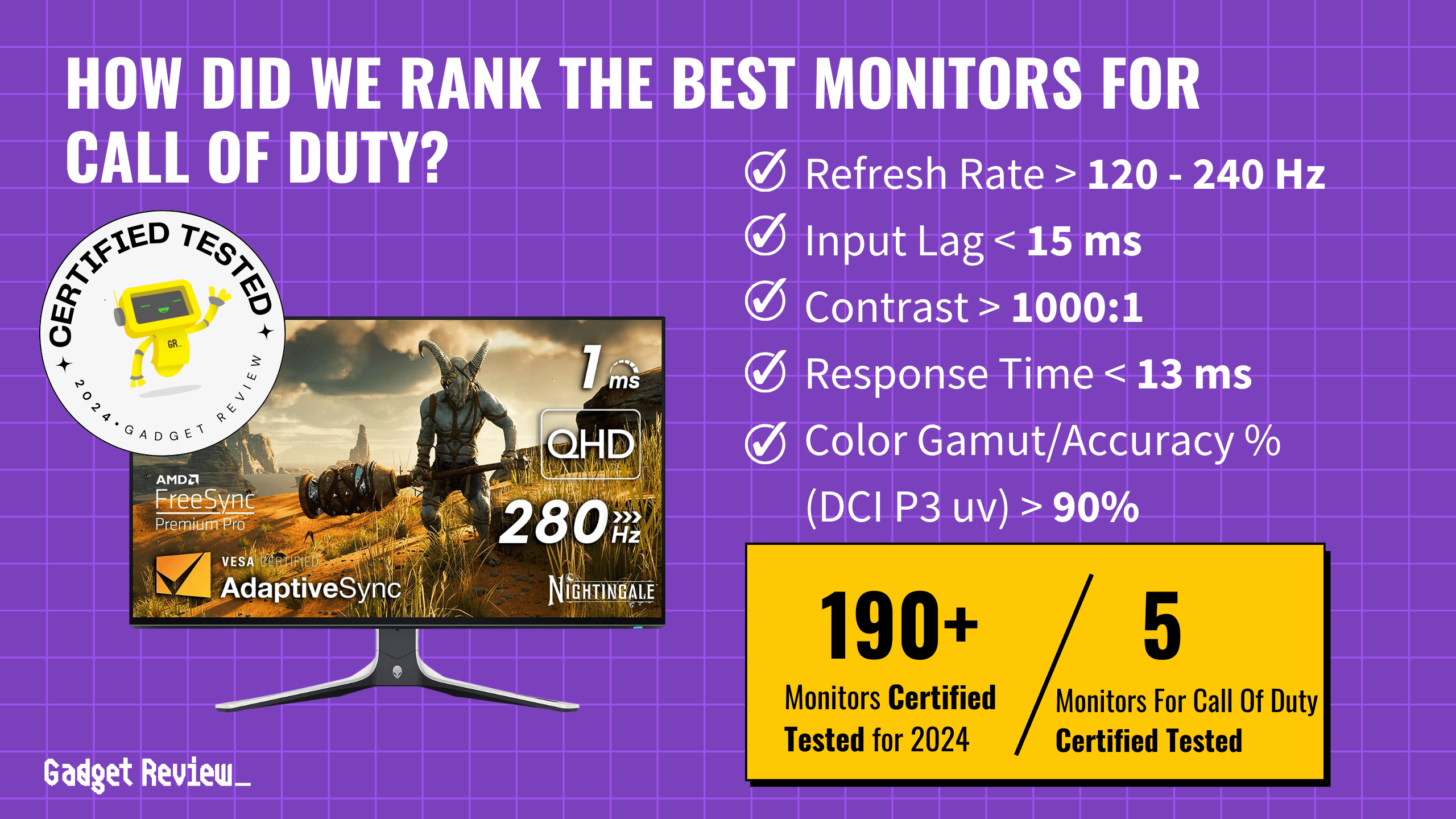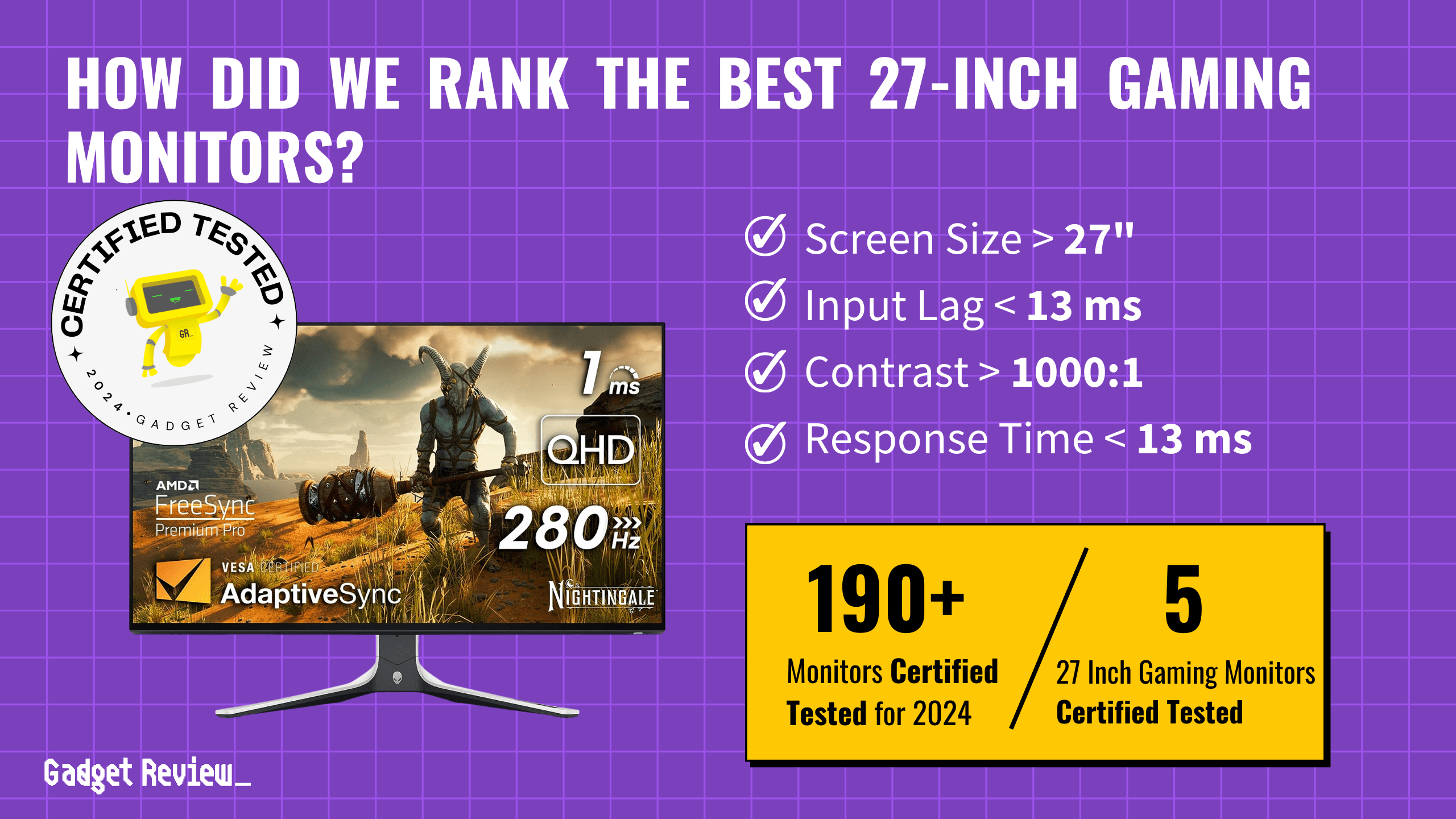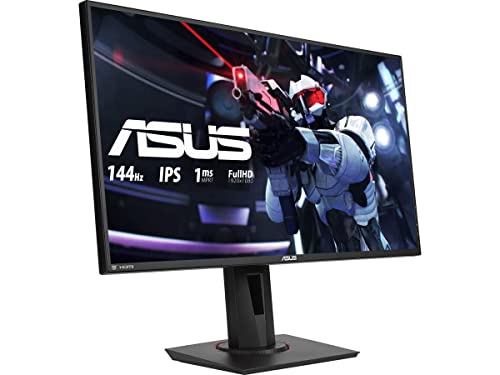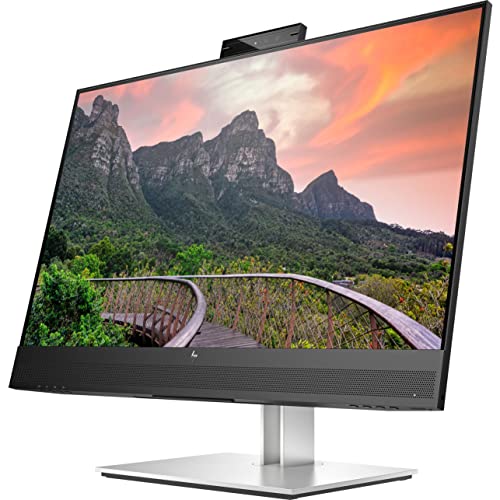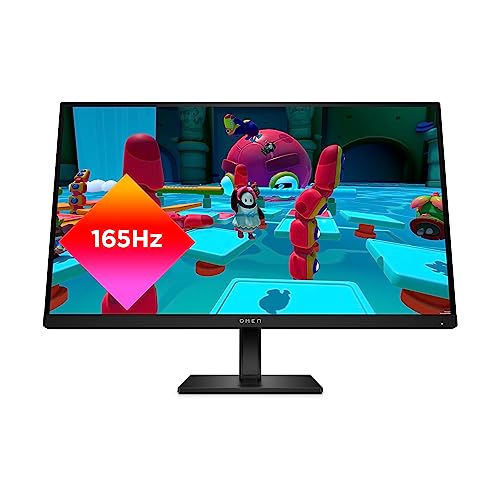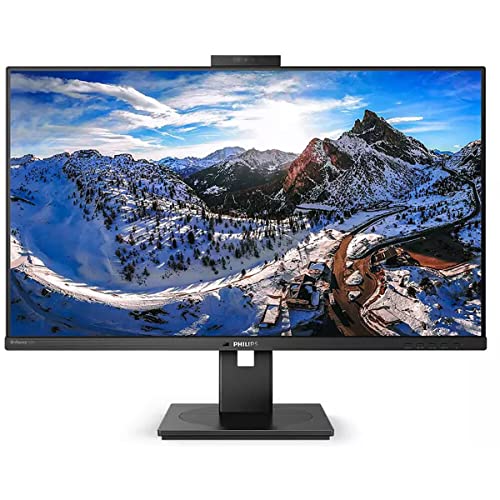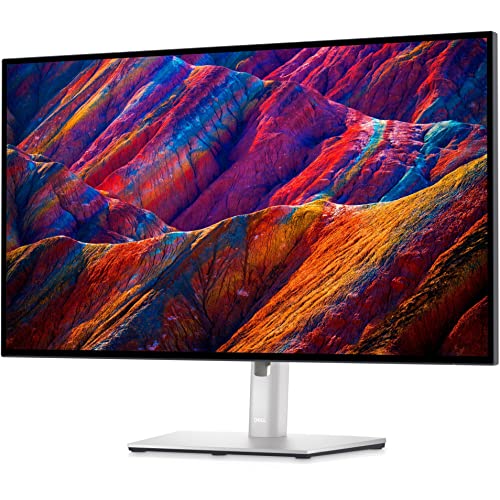When you’re looking for the best 144Hz monitors, it’s all about getting the smoothest and most responsive gaming experience. A 144Hz refresh rate significantly reduces motion blur and enhances the fluidity of fast-paced games. Top features to consider include low input lag (ideally under 15ms), high brightness levels, wide color gamut coverage, and robust contrast ratios above 1300:1. These aspects collectively ensure vibrant, detailed visuals and seamless gameplay, making your gaming sessions more immersive and enjoyable.
We reviewed 196 monitors, certified 5 as the best, and analyzed 320,309 reviews to curate our list. A staggering 71% of the experts we checked produced untrustworthy reviews. Our unique approach uses True Score and Trust Score to filter out fake and low quality reviews and certify products as tested. The winning monitors performed exceptionally well in our rigorous testing, offering you the best in image quality, responsiveness, and overall gaming performance.
.
For gamers seeking even faster refresh rates, we’ve also have highly-rated 240Hz gaming monitors, which offer exceptional smoothness for fast-paced games. Additionally, check out our selections of the top computer monitors for an impressive balance of performance, design, and features.
How Did We Rank the 144Hz Gaming Monitors?
We’ve reviewed over 200 websites to compile our guide to the best 144Hz monitors. Our thorough examination included testing methodologies, expert opinions, and customer feedback, allowing us to pinpoint 2 required test results, 2 nice-to-have test results, and 1 must-have specifications. This detailed analysis ensures our recommendations are based on extensive research and real-world application.
Our commitment to unbiased reviews is powered by our ‘True Score’ system, targeting low quality and fake reviews. When you shop through our links, you’re backing our mission. Dive deeper to see how.
Minimum Specifications
- Must have a refresh rate of 144Hz or higher
- Must have support for AMD FreeSync or NVIDIA G-Sync
Test Criteria
- Input Lag: An input lag of less than 15 milliseconds ensures a highly responsive gaming experience with minimal delay between action and on-screen response.
- Contrast Ratio: 1300:1 or higher (infinite), offering deep blacks and bright whites for an exceptional viewing experience.
“Nice To Haves”
- Fast Response Time: 13ms or less, ensuring smooth transitions without motion blur.
- Color Accuracy: At least 85% of the sRGB Coverage xy color gamut, providing rich and vibrant colors.
Latest Updates
- 05/04/2024: Republished the list to include the best 144Hz gaming monitors based on our True Score system.
Top 144Hz Gaming Monitors For 2025
Prices accurate at the time of publishing

Best Overall

Runner Up

Best Value

Best Budget

Best Mid-Range

Premium Pick
Corsair Xeneon 27QHD240
Best For PS4
The Corsair Xeneon 27QHD240 excels with its OLED panel, rapid response, and wide color gamut, making it an ideal 144 Hz monitor for gamers and creators.
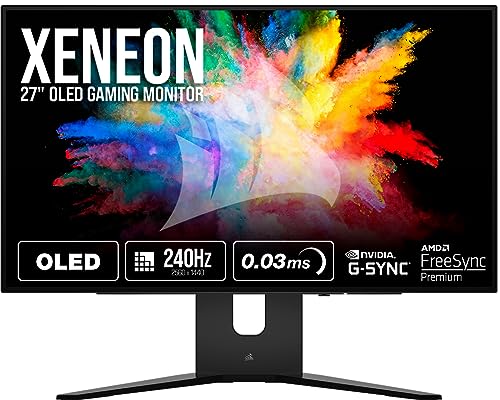
True Score
858410Experts
90336Customers
Absolutely Fresh
 $999.99
$999.99Snapshot
Reasons to Buy
- Excellent OLED Picture Quality
- Ultra-Fast Response Time
- Low Input Lag
- High Refresh Rate and VRR Support
Reasons to Avoid
- Lower Peak Brightness Levels
- Higher Input Lag with Different Refresh Rates
- Potential OLED Burn-In
Specifications

Available Inputs 3.5mm, DisplayPort, HDMI, USB 
Bluelight Filter Yes 
Built-In Speakers No 
Built-In Webcam No 
Curved Screen No Display Type OLED 
Flicker Free Yes HDMI Inputs 2 HDR Format HDR10 High Dynamic Range (HDR) Yes Max Resolution 2560 x 1440 
Panel Type OLED Refresh Rate 240 Hz 
Response Time 0.03 ms 
Rotating Screen Yes Screen size 27" 
Sync Technology AMD FreeSync, G-Sync All Specs
Test Results
Brightness (nits) 318 Contrast Ratio (as ratio, x:1) 9,473 Color Gamut/Accuracy % (DCI P3 xy) 96 Color Gamut/Accuracy % (DCI P3 uv) 0 Color Gamut % (Adobe RGB Coverage xy) 90 Color Gamut % (sRGB Coverage xy) 107 All Retailers
- $999.99
Availability
Free Shipping
Yes - $1,103.65
Availability
In StockFree Shipping
No Availability
Free Shipping
Our Verdict
If you’re looking for a premium 144 Hz gaming monitor that doesn’t compromise on performance, the Corsair Xeneon 27QHD240 is an excellent choice. Distinguished by its OLED panel, this monitor brings an infinite contrast ratio, elevating visuals with deep blacks and vibrant colors, essential for immersive gaming experiences. Additionally, a near-instantaneous response time of 0.8 ms ensures that motion blur is virtually non-existent, a critical factor for fast-paced games. Furthermore, its input lag of 13.6 ms, while not the lowest, is more than adequate for most gaming scenarios, ensuring that the action on the screen keeps up with your inputs.
The Corsair Xeneon 27QHD240’s 317.5 nits of brightness is not far off the 432 nits of the Dell G2724D. Combined with an impressive 106.96% sRGB coverage, it is suitable for gaming and content creation, where color accuracy is paramount. With a 1440p (2560 x 1440) resolution, this monitor provides a sharp image that enhances game detail and text clarity, making it a versatile choice for gaming and productivity tasks. Including both G-Sync and FreeSync compatibility ensures a smooth, tear-free gaming experience across various graphics cards, catering to a broad audience.
The Corsair Xeneon 27QHD240’s performance excels in other use cases, such as content creation, given its wide color gamut and high contrast ratio. It could also serve well for general multimedia consumption and productivity tasks, making it a multifaceted tool for those who demand high performance across different applications. With its blend of speed, visual fidelity, and versatility, this monitor is a compelling choice for gamers and professionals alike.

Best Overall

Runner Up

Best Value

Best Budget

Best Mid-Range

Premium Pick
Dell S3422DWG
The Dell S3422DWG excels as a mid-range curved ultrawide 144 Hz monitor with stellar input lag and versatility for gaming and creative tasks.
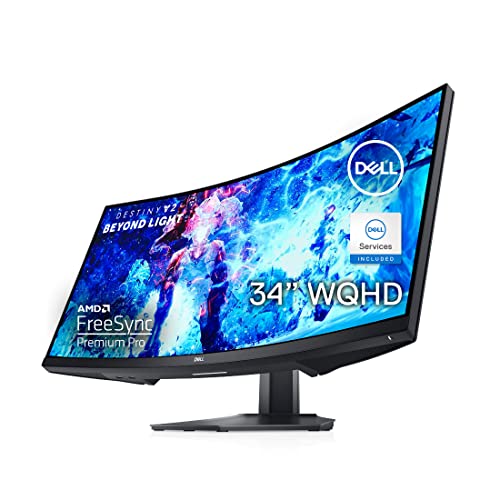
True Score
85824Experts
916kCustomers
Absolutely Fresh
 SAVE $51$399.99$349.00
SAVE $51$399.99$349.00Snapshot
Reasons to Buy
- Outstanding input lag
- Excellent response time at the maximum refresh rate
- Large screen with a crisp resolution
Reasons to Avoid
- Narrow viewing angles
- Some black smearing in dark scenes
- Buggy G-SYNC compatibility at frame rates below 60 fps
Specifications
Display Type VA HDMI Inputs 2 HDR Format Yes Max Resolution 3440 × 1440 
Panel Type VA Refresh Rate 144 Hz 
Response Time 2 ms Screen size 34" 
Sync Technology AMD FreeSync All Specs
Test Results
Brightness (nits) 413 Contrast Ratio (as ratio x:1) 3,008 Color Gamut/Accuracy % (DCI P3 xy) 87 Color Gamut/Accuracy % (DCI P3 uv) 0 Color Gamut % (sRGB Coverage xy) 99 Color Gamut % (Adobe RGB Coverage xy) 83 All Retailers
- $349.00$400Save $51
Availability
In StockFree Shipping
Yes - $396.74$510Save $113
Availability
In StockFree Shipping
No
Our Verdict
For those looking for a mid-range curved ultrawide gaming monitor, the Dell S3422DWG is a solid choice. With an exceptional input lag of just 4.5 ms, best-in-class, and a response time of 6.9 ms, this monitor ensures that every action is as immediate as your reflexes. The importance of these specs cannot be overstated for gamers, as they contribute significantly to a smoother and more responsive gaming experience, especially in fast-paced games where every millisecond counts.
This monitor’s brightness peak is 413 nits and covers 98.5% of the sRGB color spectrum, making it great for gaming, content consumption, and creation. It has a high contrast ratio of 3008:1, although lower than the 4692:1 of the other curved ultrawide on our list, the Samsung Odyssey Neo G9. This display presents deep blacks and vibrant colors, enhancing the visual fidelity of games and movies alike. The 144 Hz refresh rate and 3440 × 1440 resolution, combined with FreeSync compatibility, provide a fluid and tear-free gaming experience across a wide range of game titles.
Additionally, the Dell S3422DWG excels in other use cases, such as watching TV shows and movies, and even in productivity and content creation tasks. Its ultrawide aspect ratio and high-resolution offer ample screen real estate, making multitasking more manageable and immersive. The monitor’s performance in brightness, color accuracy, and contrast ratio also means it could provide an enjoyable experience for movie enthusiasts and content creators who prioritize color fidelity and image clarity. Its capabilities extend well into entertainment and productivity, making it a versatile addition to any setup.
Did you know 71% of computer monitor reviewers are untrustworthy?
Our research found only 33 of 110+ computer monitor reviewers as of December 2025 can be trusted. This is why Gadget Review is committed to calculating the most accurate product scores on the web.
To do this, we give every computer monitor review site a Trust Rating, which measures how trustworthy the site and their testing claims are. We then leverage AI & a machine learning model to combine and calculate the Trust Rating with data from experts and consumers to deliver the True Score, the web’s most accurate product quality rating.
 320,309
320,309Monitor Reviews Analyzed

196
Total Products Analyzed

Best Overall

Runner Up

Best Value

Best Budget

Best Mid-Range

Premium Pick
MSI Optix G27C5
The MSI Optix G27C5 excels as a versatile, budget-friendly 144 Hz monitor with excellent performance for gamers and creatives alike.
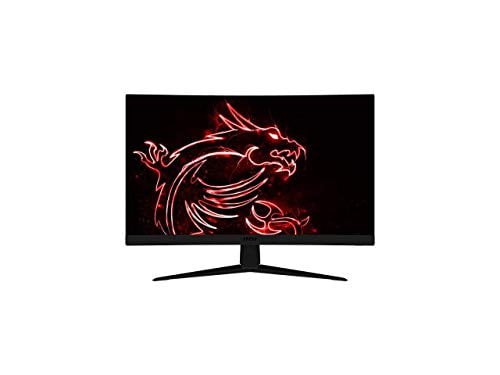
True Score
83804Experts
901kCustomers
Absolutely Fresh

Snapshot
Reasons to Buy
- Exceptional contrast
- Low input lag
- High 165Hz refresh rate
- High color accuracy
- Good response time
Reasons to Avoid
- No support for HDR content
- Narrow viewing angles
- Poor reflection handling
Specifications
Display Type VA HDMI Inputs 2 HDR Format n/a Max Resolution 1920 x 1080 (Full HD) 
Panel Type VA Refresh Rate 165 Hz 
Response Time 1 ms Screen size 27" 
Sync Technology AMD FreeSync All Specs
Test Results
Brightness (nits) 287 Contrast Ratio (as ratio, x:1) 3,676 Color Gamut/Accuracy % (DCI P3 xy) 0 Color Gamut/Accuracy % (DCI P3 uv) 0 Color Gamut % (Adobe RGB Coverage xy) 81 Color Gamut % (sRGB Coverage xy) 97 All Retailers
Availability
Free Shipping
Our Verdict
The MSI Optix G27C5 is an exceptional option for gamers looking for a budget-friendly 144 Hz monitor. It does not compromise on performance for price. With an input lag of 9.3 ms and a response time of 6.6 ms, it ensures that fast-paced games run smoothly, minimizing any perceptible delay between user input and on-screen action. This is critical for competitive gaming, where every millisecond counts.
This monitor has adequate luminance with its 287 nits of brightness, though behind the 413 nits of the Dell S3422DWG, and impressive 97.2% sRGB coverage, providing vivid and accurate colors essential for an immersive gaming experience. The high contrast ratio of 3676:1 brings out deep blacks and bright whites, enhancing visual depth and detail in dark game scenes. With its 144 Hz refresh rate coupled with a resolution of 1920 x 1080, the MSI Optix G27C5 offers a crisp and fluid display, making it an excellent choice for a gaming monitor. The addition of FreeSync compatibility ensures that the high refresh rate is fully utilized for the smoothest gaming experience possible.
While the MSI Optix G27C5 is optimized for gaming, its features lend themselves well to other use cases. The high contrast ratio and color accuracy could benefit users interested in watching movies or engaging in content creation, where visual fidelity is key. Furthermore, the monitor’s performance means it could serve well in productivity tasks that benefit from sharp text and clear imagery.
The MSI Optix G27C5 is a solid gaming monitor and versatile display solution. Its low input lag, high refresh rate, and excellent color and contrast performance make it a compelling choice for a wide range of activities beyond gaming, offering value to users with diverse interests.

DON’T SEE WHAT YOU’RE LOOKING FOR?
The best monitor for Xbox One X delivers vibrant visuals and low input lag for smooth gaming. For those interested in fast refresh rates, the Alienware AW2721D is a top contender, and the Dell Alienware AW2720HF review highlights its impressive performance in competitive gaming. For work, the best computer monitor for work ensures productivity with accurate colors and high resolution.
Meanwhile, the leading curved gaming monitor enhances immersion with its panoramic view, while the best 4K gaming monitor provides ultra-sharp visuals for demanding gamers. For those seeking more details, our Gigabyte M32U review showcases its strong 4K performance at an affordable price point.

Best Overall

Runner Up

Best Value

Best Budget

Best Mid-Range

Premium Pick
Dell G2724D
The Dell G2724D is a budget-friendly, high-performance 144 Hz monitor with impressive color accuracy and low input lag. It is perfect for gaming and creative tasks.
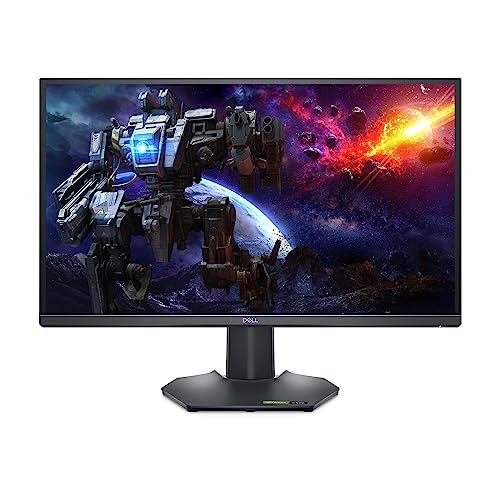
True Score
83812Experts
88126Customers
Absolutely Fresh

Snapshot
Reasons to Buy
- Great image quality
- Low Input lag
- High native refresh rate
Reasons to Avoid
- Subpar contrast ratio and HDR color gamut
- Okay response time
- No HDMI 2.1 and USB ports
Specifications

Aspect Ratio 16:9 
Available Inputs DisplayPort, HDMI 
Bluelight Filter Yes 
Built-In Speakers No 
Built-In Webcam No 
Curved Screen No Display Type LED 
Flicker Free Yes HDMI Inputs 2 HDR Format HDR10, HDR400 High Dynamic Range (HDR) Yes Max Resolution 2560 x 1440 
Panel Type IPS Refresh Rate 165 Hz 
Response Time 1 ms 
Rotating Screen Yes Screen size 27" 
Sync Technology AMD FreeSync Premium, G-Sync, VESA Adaptive-Sync All Specs
Test Results
Brightness (nits) 432 Contrast Ratio (as ratio, x:1) 1,350 Color Gamut/Accuracy % (DCI P3 xy) 86 Color Gamut/Accuracy % (DCI P3 uv) 0 Color Gamut % (Adobe RGB Coverage xy) 82 Color Gamut % (sRGB Coverage xy) 100 All Retailers
Availability
Free Shipping
Our Verdict
If you’re looking for a budget-friendly 144 Hz gaming monitor that doesn’t skimp on performance, the Dell G2724D is a compelling choice. With an input lag of just 9 ms and an impressive response time of 4.3 ms, it’s well-suited for fast-paced gaming where every millisecond counts. Its peak brightness of 432 nits is noteworthy, providing vibrant and clear visuals, although it falls short of the Samsung Odyssey Neo G9’s stellar 628.3 nits.
This monitor covers 100% of the sRGB color gamut and has a contrast ratio of 1350:1, ensuring rich and accurate colors for a more immersive gaming experience. Its smooth 144 Hz refresh rate and sharp 1440p (2560×1440) resolution ensures crisp, fluid visuals, whether navigating fast-paced game scenes or enjoying high-definition video content. Furthermore, compatibility with G-Sync and FreeSync Premium means you’ll enjoy tear-free gaming across various graphics cards.
Beyond gaming, the Dell G2724D’s comprehensive features make it versatile for other applications as well. Its high brightness, excellent color accuracy, and solid contrast ratio mean it would also serve well for content creation, productivity tasks, and general multimedia consumption. Whether you’re editing videos, crunching numbers, or binge-watching your favorite series, this monitor is capable of delivering a satisfying experience across a range of use cases.
Category Snapshot
Computer Monitors
- Total Brands/Products Tested
27 Brands, 196 Products
- Top 2 Brands
Dell, HP
- Price Range (Budget-Premium)
$100-$1,500
- Average True Score
74.46
- Important Test Criteria
Brightness (cd/m2)
Contrast Ratio (1000:1) - Most Trusted Testers

- Top Monitor Experts
- Typical Warranty
2 years
- Covered by Insurance
Yes – AKKO

Best Overall

Runner Up

Best Value

Best Budget

Best Mid-Range

Premium Pick
Samsung Odyssey Neo G9
The Samsung Odyssey Neo G9 is a high-end curved ultrawide 144 Hz monitor that excels in gaming and versatility, offering top-tier specs and stunning visuals for diverse uses.
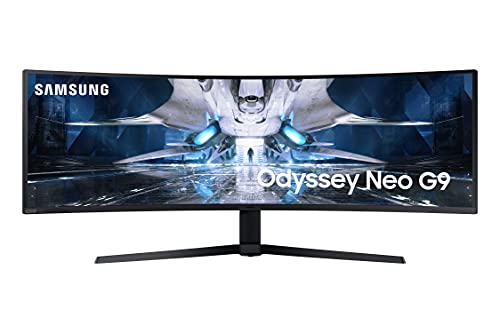
True Score
81814Experts
853kCustomers
Absolutely Fresh
 SAVE $900$2,499.99$1,599.99
SAVE $900$2,499.99$1,599.99Snapshot
Reasons to Buy
- Outstanding 240Hz maximum refresh rate
- Advanced Mini LED local dimming
- HDMI 2.1 inputs
- Excellent color gamut
- Outstanding 5120 x 1440 screen resolution
Reasons to Avoid
- Overly aggressive screen curvature
- Narrow viewing angles
- Variable refresh rate (VRR) issues at 60Hz
Specifications

Curved Screen Yes Display Type VA HDMI Inputs 2 HDR Format Yes Max Resolution 5120 x 1440 
Panel Type VA Refresh Rate 240 Hz 
Response Time 1 ms Screen size 49" 
Sync Technology AMD FreeSync All Specs
Test Results
Brightness (nits) 628 Contrast Ratio (as ratio, x:1) 4,692 Color Gamut/Accuracy % (DCI P3 xy) 91 Color Gamut/Accuracy % (DCI P3 uv) 0 Color Gamut % (Adobe RGB Coverage xy) 86 Color Gamut % (sRGB Coverage xy) 100 All Retailers
- $1,599.99$2,500Save $900
Availability
In StockFree Shipping
No - $1,599.99$2,500Save $900
Availability
In StockFree Shipping
- $1,689.99$3,033Save $1,343
Availability
In StockFree Shipping
No - $2,199.99
Availability
In StockFree Shipping
No
Our Verdict
If you’re looking for a high-end curved ultrawide gaming monitor, the Samsung Odyssey Neo G9 offers exceptional performance where it matters most to gamers, even though it has a steep price. With an input lag of 8..9 ms and a response time of 2.7 ms, this monitor is engineered for gamers seeking minimal delay and maximum fluidity in fast-paced gaming scenarios. Its 144 Hz refresh rate and 5120 x 1440 resolution are complemented by FreeSync compatibility, ensuring a tear-free and immersive gaming experience, especially in graphically intensive games.
The monitor has a best-in-class peak brightness of 628.3 nits and an impressive contrast ratio of 4692:1, higher than the MSI Optix G27C5’s 3676:1. Combined with an astounding 99.6% sRGB coverage, these create vivid, lifelike visuals that enhance every gaming session. Such high contrast and color fidelity are particularly crucial in games with dark, intricate environments, allowing for better visibility and more immersive gameplay.
Its exceptional brightness, high contrast ratio, and comprehensive color coverage make it a viable option for content creation, productivity, and entertainment, such as watching movies or editing videos. The ultrawide aspect and high resolution can greatly benefit multitasking and provide an expansive canvas for creative professionals.
The Samsung Odyssey Neo G9 is a gaming monitor and versatile tool that excels in various use cases. Its top-tier gaming specifications ensure a competitive edge in gaming, while its superior display qualities cater to entertainment and professional needs. Thus, it is a comprehensive choice for users who demand the best across all facets of computer use.
Which Criteria Matters for Testing 144Hz Gaming Monitors?
By focusing on these criteria (2 required, 2 nice to have), anyone can quickly and easily compare these computer monitors and how they’ll perform. This helps you make an informed decision and purchase the best 144Hz gaming monitor.
| CRITERIA | RANGE | REQUIRED | DEFINITION |
|---|---|---|---|
| Input Lag | < 15 ms | Yes | The time it takes for the monitor to register inputs from the user and process them as action. |
| Contrast Ratio | >1300:1 | Yes | The difference in brightness between the whites (lit sections) and blacks (dim or unlit sections) of a monitor panel. |
| Color Gamut % (sRGB Coverage xy) | > 85% | No (Nice to have) | How much of the sRGB color gamut is covered by the monitor, which helps indicate color accuracy for web content and games. |
| Response Time | < 13 ms | No (Nice to have) | The time it takes for a pixel to change from one color to another. |
Our Trusted Data Sources
We looked at 110+ computer monitor reviewers and found that 33 are trustworthy (60%+ Trust Rating). The three we have listed below are our most trusted for computer monitors.
- Samuel Breton – Rtings, MuckRack
- Chris Eberle – Tom’s Hardware, LinkedIn
- Tony Hoffman – PC Mag, MuckRack
Interested in a comprehensive analysis of our data sources? We’ve got you covered. Below, you’ll find a detailed list of every computer monitor review website we’ve identified, organized by their respective Trust Ratings from highest to lowest. But we didn’t stop there. We’ve meticulously reviewed each publication and verified the data by checking whether the authors have bio links to MuckRack or LinkedIn. We’re committed to not only checking the facts but ensuring their veracity.
Computer Monitor Test Data & Results
1. Input Lag (ms) Test Results
Input Lag (ms)
< 15 ms
Acceptable range of performance
Definition: The amount of time it takes for a monitor to register an input from the user and display it.
Units of Measurement: Milliseconds (ms)
Tools to Measure: Input Lag Meter
Why It’s Important:
Input lag introduces artificial delay when gaming, which creates a mismatch between your reactions and on-screen action and creates frustration.
Input lag is more of a concern when it comes to gaming, but if you plan on using a monitor for a bit of gaming when you aren’t focused on productivity, editing or other tasks, lower values help improve responsiveness. High input lag means your actions take longer to register on the monitor, effectively introducing an artificial delay to your reactions.
It’s for this reason that we generally recommend an input lag under 15 ms. This ensures the delay that’s introduced has minimal impact on your reactions to what’s happening on screen. It’s important to note that a high input lag won’t have any real effect on anything that isn’t gaming, so it can be safely ignored if you don’t plan on gaming on your monitor.
Input Lag (in ms; lower is better)
2. Contrast Ratio (as ratio, x:1) Test Results
Contrast Ratio
> 1300:1
Acceptable range of performance
Definition: How bright the monitor will get, usually under specific testing conditions, like 10% windows (which means 10% of the screen is a white box.)
Units of Measurement: Ratio
Tools to Measure: Luminance meter or photometer or colorimeter
Why It’s Important:
Contrast ratio is how dynamic images are given detail and dramatic effect, with very dark areas appearing truly dark, while bright areas are bright and pop.
Contrast ratio is responsible for making images appear “dynamic” and “dramatic.” By having a good contrast ratio, a monitor is able to recreate dramatic differences between light and dark spots in scenes, images and games accurately.
At a minimum, we recommend a contrast ratio of 1300:1, as this will do a good enough job at allow for detail in dark scenes and images. If contrast ratio gets too low, the picture quality suffers, and the monitor performs worse across the board, no matter the lighting condition. By getting a monitor with a sufficiently high contrast ratio, you can ensure the picture quality doesn’t suffer, and dramatic scenes with stark shifts in lighting, whether they be in games or videos, are created as accurately as possible.
Contrast Ratio (higher is better)
3. Color Gamut % (sRGB Coverage xY) Test Results
Color Gamut % (sRGB Coverage xy)
> 85%
Acceptable range of performance
Definition: The amount of the sRGB gamut that the monitor covers.
Units of Measurement: %
Tools to Measure: Colorimeter
Why It’s Important:
The sRGB color gamut is the most commonly used gamut for most colors when browsing the web, watching videos on the web on sites like YouTube, and when playing video games.
Since color gamut comes in a variety of different types, there’s bound to be some confusion as to which is meant for what. sRGB is an extremely common gamut that is used for the vast majority of web content, including how YouTube videos display, and is the primary gamut used for video games.
If you’re looking for accurate colors while web browsing, watching videos or playing games, you’re going to want a coverage of at least 85%. Higher is always better and hitting 100% means that if you correctly calibrate your monitor, you should be seeing content exactly as it was intended. Higher than 100% means that more than just the standard gamut has been covered, which can create more saturated and vivid colors. Coming in under 100% means the colors are less accurate, though this doesn’t become a major issue until you start to fall under 90%.
Color Gamut SRGB (in %; higher is better)
4. Response Time (ms) Test Results
Response time measures how long it takes pixels to change from one color to another, often gray to gray. Low response times means the monitor is able to keep up with constant shifts in colors, and helps prevent motion blur from being introduced whatever you’re watching.
We generally recommend a response time that is 13 ms or less, as this will keep motion blur to a minimum, but if you don’t watch a lot of very high intensity videos or play fast-paced games, response time isn’t going to matter much. It’s important to note that monitors will often advertise a 1ms or 2ms or 5ms response time, to name a few, but response time tests measure full color to color shifts, as well as overshoots, which produces different times than what the monitor often claims on the box. This is why response time is a listed spec, but also a testable criterion.
Response Time (ms)
< 13 ms
Acceptable range of performance
Definition: The amount of time it takes for pixels on a monitor to shift from one color to another.
Units of Measurement: Milliseconds (ms)
Tools to Measure: Response time tool, camera
Why It’s Important:
Faster response times keep the screen from becoming muddied and blurred when fast-paced action scenes in movies or games start.
Response Time (in ms; lower is better)
144Hz Gaming Monitors: Mistakes To Avoid
- Ignoring Panel Type: Different panel types, such as TN, IPS, and VA, have their own advantages and disadvantages. TN panels often have faster response times but poorer color reproduction and viewing angles compared to IPS and VA panels. Consider your priorities and choose accordingly. The best monitor for video editing will likely feature an IPS panel as they excel in color accuracy and have wide viewing angles.
- Not Checking Compatibility: Ensure that your graphics card can support 144Hz output. Additionally, check if the monitor supports the necessary interfaces like DisplayPort or HDMI 1.4/2.0 for high refresh rates.
- Ignoring Adaptive Sync: Adaptive Sync technologies like AMD FreeSync and NVIDIA G-Sync can significantly improve gaming experiences by reducing screen tearing and stuttering. Ensure your monitor supports the adaptive sync technology compatible with your graphics card. To achieve a smooth gaming experience on a budget, the best 1080p gaming monitors offer both Adaptive Sync support and high refresh rates. For gamers looking to balance refresh rate and visual quality, the top 120Hz gaming monitors offer smoother gameplay compared to standard 60Hz screens while benefiting from Adaptive Sync technologies.
- Forgetting About Connectivity Options: Ensure the monitor has the necessary ports and cables for your setup. DisplayPort is preferable for high refresh rates, but HDMI 2.0 can also support 144Hz at lower resolutions.
The 144Hz Gaming Monitors Tests Compared
Product |
True Score
|
Brightness
|
Contrast Ratio
|
Color Gamut (DCI P3)
|
Color Gamut (sRGB)
|
Input Lag (ms)
|
Response Time (ms)
|
Reflections % | |
|---|---|---|---|---|---|---|---|---|---|
| 85 |
|
|
|
|
|
|
| $999.99 |
| 85 |
|
|
|
|
|
|
| $349.00 $400 $51 |
| 83 |
|
|
|
|
|
|
| |
| 83 |
|
|
|
|
|
|
| |
| 81 |
|
|
|
|
|
|
| $1,599.99 $2,500 $900 |


